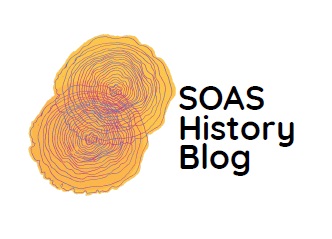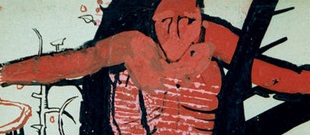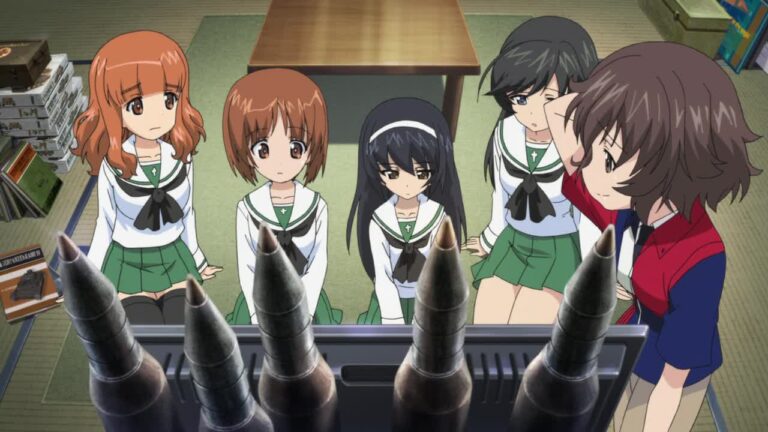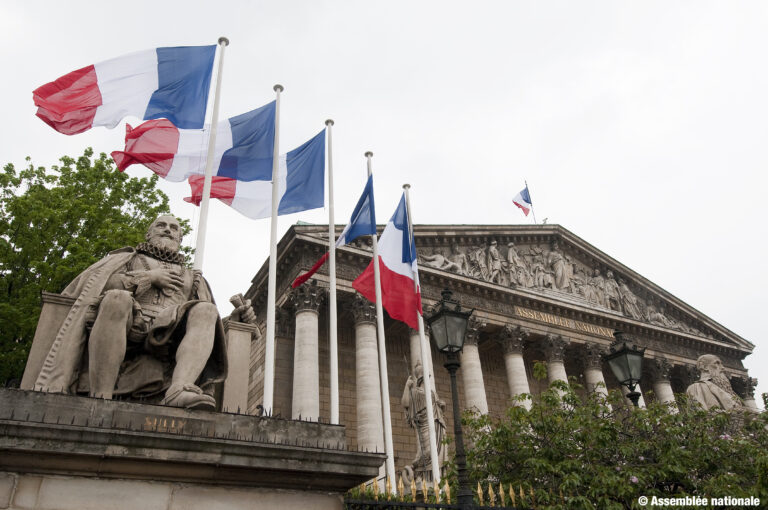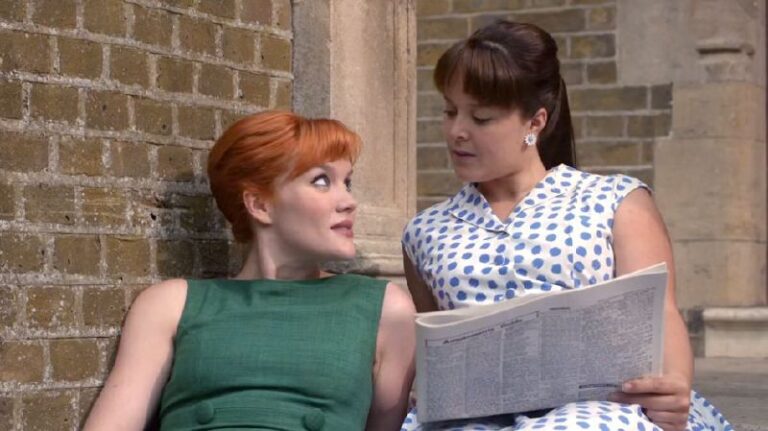Particles Beyond Sight: Black Subjectivity and Creolization in Denis Williams’ Other Leopards
by Ishmael Tikly
There was a silence at the heart of the flying bodies; there was a soundless sound; there was a motion meaningless as the awful collision of particles beyond sight; there was an energy purposeful of intention but beyond understanding. A man must lose his life to find it.
Denis Williams, Other Leopards, 182.
The world of Denis Williams’ 1963 novel Other Leopards is haunted by absences, that which exists ‘beyond sight’. The above quote describes a dance at a wedding in the fictional country of Johkara, which Williams locates near Sudan. Williams’ work depicts the mess of conflict spurred by the decline of British colonialism in North Africa and internal divisions of black and Arab people, and Christians and Muslims within the country. Passions, furies, and desires are charted throughout the book with their origins unknown and futures undetermined.
The Story
The absences of the novel extend to the protagonist. He was given his nickname, Lobo, by his sister, a figure only ever mentioned in passing and whose own fate is left ambiguous. His work as an archaeological draughtsman leads him to a headless statue of the ancient Meroë queen Amanishakete. It is on the premise of absence that Lobo’s entire subjectivity is constructed.
Williams’ construction of his protagonist’s subjectivity shows similarities to the nameless protagonist in Ralph Ellison’s Invisible Man (1952): ‘I am invisible, simply because people refuse to see me.’ The existence of both characters comes from a place of utility, where their usefulness for others determines the limits to which they are recognised as individual subjects. Lobo is pulled back and forth by different characters calling him by different names: Lobo, Lionel, Froad, Mr Froad. Hughie, an archaeologist for whom Lobo (Hughie calls him by his second name, ‘Froad’) works as a draughtsman, dreams of uncovering the secret origins of a Sudanic civilisation within the region of Johkara, specifically its capital Karo. Through evidence of native iron-smelting Hughie identifies the germ of a civilization distinct, in its genesis, from the Kingdom of Kush, a recognised ancient civilisation in what is now Sudan. Lobo’s detailed drawings of axe-heads, spears and other tools further Hughie’s ambitions. Mohammed, another elusive figure, commissions Lobo (‘Mr Froad’ for him) to write a series of articles to help guide conversations around race and revolution in Johkara. He perceives the protagonist as a ‘model, in a way, of racial adaptation’ who, through his propaganda, would present himself as the charismatic utopian vision of a cosmopolitan Johkara. This would be a place where the black population continues to exist under the Muslim minority. The presence of charismatic black African leaders in neighbouring countries, and their success at upturning these power dynamics, has, to Mohammed, illustrated the fragility of such hierarchies. Parallel with this, Lobo (or, again, ‘Mr Froad’) is commissioned by the local Chief and Bishop to write a series of articles about the deeply entrenched history of Christianity in Johkara, in order to counter the ‘religious conviction’ of the Arab state’s efforts to maintain power. From a place of namelessness, in the Ellisonian sense, comes a flurry of names. Each of these is tied to its individual instance of use in realising a desired end, the dreaming up of an origin, in whatever form that takes, for Johkara.
Of course, my above use of Ellison’s line shouldn’t entail that Lobo is merely a passive receptacle for the dreams and desires of others. Again, like Ellison’s nameless protagonist, Lobo leans into his invisibility. He accepts its initial premise that he, as a black self, lacks an essential identity. He finds absurdity in Hughie’s quest for a kingdom in Karo, on account of the ‘persistent inertia among African peoples’:
Old Karo with its crumpled-eiderdown, camel coloured landscapes, its tangled, pathetic, dead litter of pyramids, its cacographic carvings and reliefs, its beast-worship – all faeces! Africa was one great, stinking, sweltering pile of faeces, and the maggots sprouting on it had grown accustomed to the stench. I was one, sure. But why worry! Why burrow deeper! Why raise the putrid stench higher than one man could bear!’
Denis Williams, Other Leopards, 80.
Lobo chooses to take Muhammed’s money to write the commissioned articles illustrating a glorious, romantic and made-up-on-the-spot history of Johkara. He weaves a mythology about the origins of African people for financial gain and stays true to his own pessimisms. Lobo also chooses to take ownership over his subjectivity through violent acts against women. His treatment of Catherine and Eve, Hughie’s secretary and the Chief’s daughter respectively, is incomprehensible unless it’s seen to be informed by an already-present twisted neurosis of his. Lobo’s musings on the headless queen Amanishakete shed some light on this neurosis: ‘I knew that this image of Eve, this persistent female, would never leave me as long as I lived. And I resented this’ (Williams 2009: 134-135). Lobo subscribes to, borrowing from bell hooks, a ‘militant black male sexism’. In ostensible opposition to a white supremacist epistemology, this ideology that the assertion of one’s being comes from a capacity for and enactment of violence, with women as the usual victims, only conforms to stereotypes of black male violence resulting from this epistemology. ‘Sadly and strangely, individual black males have allowed themselves to become poster boys of brute patriarchal manhood and its concomitant woman-hating’ (hooks 2003: 47-48). In the case of Other Leopards, whether this perpetuation of patriarchal values be conscious social commentary of Williams, or an unconscious disclosure of his own views/the views of the time, Lobo understands the women in his life as enmeshed in a symbolic system within which lies his own being. Catherine and Eve serve as fictitious sources of a kind of wholeness, which Lobo locates outside himself, in the very idea of a woman itself, the fiction of which Lobo both acknowledges and stubbornly refuses.
Williams draws upon the significance of absence, what exists beyond sight, to present Lobo, and Johkara as a whole, as aporias, places of internal contradiction. Both are a space containing a non-finite wealth of identity, desires, individual or collective. Both also contain no identity at all, no origins beyond myths cobbled together in the modern day for political gain. It is only in the final few pages that Lobo’s subjectivity, which he himself has identified as fractured, becomes unified. In a violent rage Lobo wounds Hughie, maybe fatally. Anticipating a search party, he runs into a forest and, having stripped off all his clothes, climbs up into a hashab tree. The original cover art for the novel, designed by Williams himself, emphasises the literal interpretation of his merging with the tree. The arms of a near-faceless Lobo spread wide like a canopy whilst his legs feed into and around the trunk. In an ambiguous ending, the contours and shadows of his naked body, painted black, become indistinguishable from the jutting branches (figure 1).
Lobo as Creolized, Williams as Creolized
I read Other Leopards in 2022, a time when history and philosophy have poked holes in ideas of ‘origins’, especially in relation to forming a black identity. Lewis Gordon’s book Fear of Black Consciousness does this eloquently. Gordon, in the chapter titled “Race-Making”, traces the etymology of ‘race’ through history, to a myriad of different times, different places and different ascribed values. Racial types have crystallised in these individual contexts only to dissolve and reform in new contexts based upon the new ways of organising societies. As a term, ‘race’ certainly has a lineage, a history. But a study of this history has shown that its definition, and any attempt to nail this definition down, would involve a fallacious attachment to the present as eternal. This final point is ignored for the sake of racist praxis. At the root of racism, and anti-black racism specifically, Gordon locates a desire for superiority through the de-legitimation of black existence, its relegation to a position outside of the category of human. Race in the modern sense (in the sense of being inseparable from the very idea of modernity), is only the newest in the iterative processes of language and culture, one where this very history is wiped clean for the sake of fictitious origins or, in the case of black subjects, lack of origins (Gordon 2022: 73-86).
For me, the critical value of Other Leopards, and Williams’ artistic output more generally, is brought out when played off concepts like creolization. I contextualise Williams’ question about origins in the intellectual movements which evolved in the Caribbean and other parts of the black diaspora during his career. Among Denis Williams’ audience were a community of specifically Caribbean intellectuals who themselves were working to configure their relationship to the African continent. In this vein, during a discussion about Other Leopards at the second Caribbean Arts Movement (CAM) conference (31st August – 2nd September 1968), Gerald Moore interpreted the novel as providing a specifically ‘West Indian’ experience of Africa (Walmsley 1992: 169).
Spaces like CAM were important in the 1960s and beyond for artists of the black diaspora to share and debate in public and private settings. Within these spaces, alternatives to hegemonic narratives, like the ostensible absence of black history, were cultivated and disseminated, and new connections were forged between artists based on a shared diasporic identity. In keeping with the spirit of CAM and Denis Williams’ writings, Gordon uses the term ‘creolization’ to counter these hegemonic narratives, which eternalise the present. Creolization has been used as a critical and conceptual tool in academia in the last few decades. Gordon, specifically, uses it to denote the inherently ‘mixed’ existence of any culture, a fact of existence which negates any conception of racial purity at the heart of anti-black racism.
Creolizing would be a better way of describing human reality, as it’s a radical kind of mixture – one that in effect not only manifests new forms of being but also challenges the notion of static being. The use of the present participle “creolizing” is to illustrate that mixing – especially of elements that, under a racist system, supposedly don’t belong together – is not closed. It’s not a closed achievement or what may today fashionably be called “an event.” Instead, it’s an ongoing activity of the production of relations through which we come to live reality.
Lewis Gordon, Fear of Black Consciousness, 124.
Based on this premise, any kind of hegemonic narrative of origin, even one pioneered by black subjects, overlooks the interwebbing of relations that create subjectivity. Often this has violent consequences, including the contemporary acts of anti-black racism, which Gordon addresses in his book (Gordon 2022, 191-192).
The works of thinkers involved in these movements created alternatives to the conception of an entirely absent black history – a belief Lobo holds on to – through the identification of African cultural traditions which survived colonialism. Edward Kamau Brathwaite’s Folk Culture of the Slaves of Jamaica (1970), for example, tracks continuities of cultural practice in Jamaica, which survived the Middle Passage. These movements themselves also serve to provide an alternative to the idea that a black identity needs to be grounded in a “lost civilisation” narrative, an idea which Lobo himself feeds through his writings for Muhammad. This alternative comes in the form of new connections based upon a shared diasporic identity, cultivated through institutions such as the CAM and Caribbean arts festivals, etc.
Williams was heavily involved in these diasporic movements. In fact, Andrew Jefferson-Miles writes that Williams’ sustained immersion in countries around Africa, including Sudan, was part of a wider trend of black diaspora artists turning to Africa in search of roots, including Brathwaite and Oscar Dathrone (1934-2007) (Williams and Jefferson-Miles 2012: iv). But, working with this logic, it’s difficult to perceive any kind of metaphorical root network, rooted in a particular place, which could have nourished Denis Williams’ creative output in its entirety. His work extended from paintings to novels to archaeological treatises about his native Guyana. Even within his work in fine arts there’s a wide range of styles, suggesting an incredible heterogeneity of inspirations. Williams wrote Other Leopards during his time in Sudan, where he held a teaching post at the School of Fine Art in Khartoum. Within his artistic circle, perhaps the most notable, and globally influential, figure was Ibrahim el Salahi. Williams worked with Salahi at the Khartoum School, a name for an informal movement of modern artists in 1960s Sudan. Salahi is one of the proponents of calligraphic modernism, a phrase which terms a reconfiguration and re-imbuing of meaning to Arabic calligraphy. Working within this motif, Salahi rarely goes for ‘realism’ with human or other forms. His 1964 work The Last Sound, although painted after Williams had left Sudan, is nevertheless a perfect example of what unfurled from the intellectual zeitgeist which Williams was exposed to (figure 2). Floating shapes and Arabic calligraphy enthralled within fine layers of earthen tones. At the centre there lies a faint African mask-like form, alluding to strands of religion in Sudan, which pre-date and run in conjunction with Islam. As Dadi notes, the title is a reference to the Muslim prayers recited at death (Dadi 2010: 555). It is impossible to tell whether the various bodies within the painting are emanating from the mask or returning to it. Nevertheless, within the harmony of the image Salahi creates a contradiction. Islam, monotheistic, unified under the doctrine of tawhid, existing within a heterogenous space of traditional African religions. The Last Sound manages to bring this logical contradiction, a plurality of origins, into the realm of the sensible. An ethical responsibility to make sense, with paint and canvas, of this heterogeneity, can perhaps be gauged from Salahi’s work. It seems that both he and Lewis Gordon would agree that Sudanese social life is defined by a plurality of origins, ‘indigenous’ African culture and the Arab world. Williams, with his textured, diasporic career spanning continents, would also. Lobo would not.
In fact, all of the characters of Other Leopards, Hughie, Mohammed, the Chief and Lobo, reject any notion of heterogeneous origins, and in doing so, reject the country of Johkara as an inherently creolized entity. The kind of black subjectivity Lobo chooses to endorse, even insincerely, is rooted in the narrative mindset of an anti-black racism, as Gordon describes it above, which rejects creolity as a fundamental condition of human existence. The shortcomings and pitfalls of an attachment to this fiction he endorses are detailed in Lobo’s descent into confusion and abusive behaviour. Instead it exists in instances of relation. Lobo’s manipulation of and hatred towards the relationships which defined him, his relationships to the people in his life and, ultimately, his relationship to the land itself, stemmed from a refusal to come to terms with his absence of origin, to accept creolity.
It can be seen now that the instances of fracture and absence within Other Leopards can be rephrased as signs of a creolisation inherent to all identity and that which should be pursued especially when forming a black subjectivity. Williams’ own journey, along with other Caribbean and African artists of the time, can be viewed as a reflection of this form of subjectivity. The creolity, the ultimate unplaceability, of his work is a reflection of the crisscross of trans-continental excursions within which it emerged (Sudan was only one of his destinations, which included the UK, Nigeria and Uganda). To the extent to which Denis Williams’ artistic and literary output can be ascribed to a single self, it is ascribed on the condition that that self is seen as fractured, spread out over continents, existing far beyond the confines of a single body. Williams is a creolised self.
Foregrounded, now, by this historical context of diasporic intellectual transmission and Gordon’s contemporary theorising, I can return to the quote at the start of this essay and, maybe, illuminate Other Leopard’s ambiguous ending. Black identity is not rooted in any single origin story, be it Christianity, Islam, or an iron-smelting civilisation. To use Lewis Gordon’s terminology, holding any of these higher than any other in this way is a form of bad faith or false consciousness, a commitment to a world-view, in which, borrowing from Williams, ‘[a] man must lose his life to find it’, which furnishes the violence of anti-black racism or the violence committed by Lobo himself. Lobo must lose himself through accepting this absence, the absence of his sister or the absent head of Amanishakete, without trying to grasp what is absent, what does not exist concretely. Lobo must commit to losing himself within the hashab.
References and further readings:
Brathwaite, E. K. 1970. Folk Culture of the Slaves of Jamaica, London: New Beacon Books.
Dadi, I. 2010. “Ibrahim El Salahi and Calligraphic Modernism in a Comparative Perspective.” South Atlantic Quarterly 109(3), pp. 555-576.
Ellison, R. 2014. Invisible Man. New York: Penguin Books.
Gordon, L. 2022. Fear of Black Consciousness. New York: Farrar, Straus and Giroux.
Gore, C. and Picton, J. 2009. “Denis Williams in Africa: A New Approach to Its Art and Technologies.” In (ed.) C. Williams and E. A. Williams Denis Williams: A Life In Works, Leiden: Brill.
Hasan, S. M. 2012. Ibrahim El Salahi: A Visionary Modernist. New York: Museum for African Art.
hooks, b. 2003. We Real Cool: Black Men and Masculinity. New York: Routledge.
Walmsey A. 1992. The Caribbean Artists Movement 1966-1972: a Literary and Cultural History. New Beacon Books.
Williams, D. 2009. Other Leopards. Leeds: Peepal Tree Press.
Williams, E. and Jefferson-Miles, A. J. 2012. The Art of Denis Williams. Leeds: Peepal Tree Press.

Ishmael Tikly
he/him
Ishmael is a recent graduate of the SOAS World Philosophies BA. His research interests include the literary canon of the Caribbean and African diaspora in Britain from the mid-century onwards. This research is undertaken concurrently with his research into the history, literature and philosophies of the African continent itself, with a focus on the Swahili coast.
SOAS History Blog, Department of History, Religions and Philosophy, SOAS University of London
